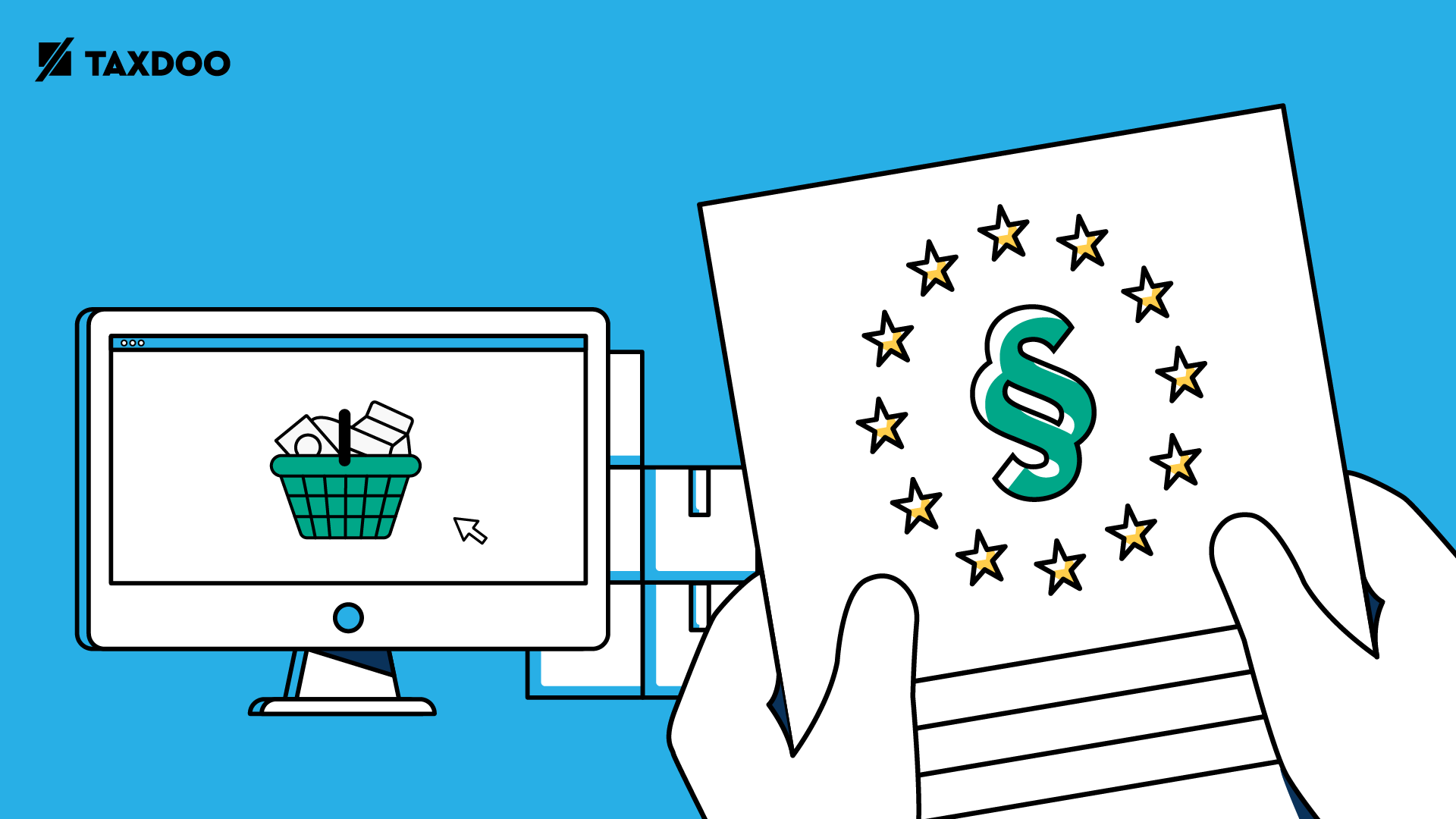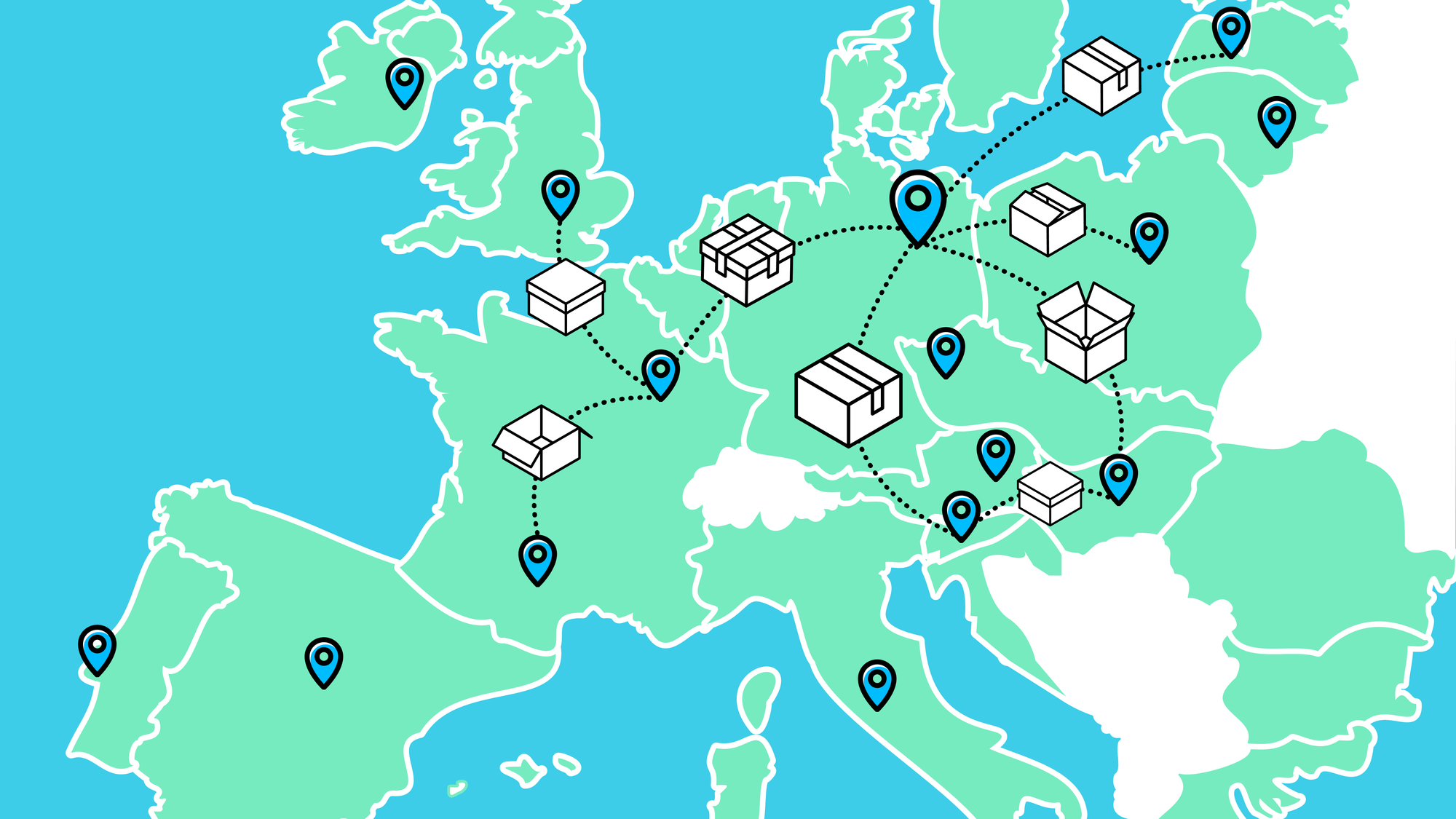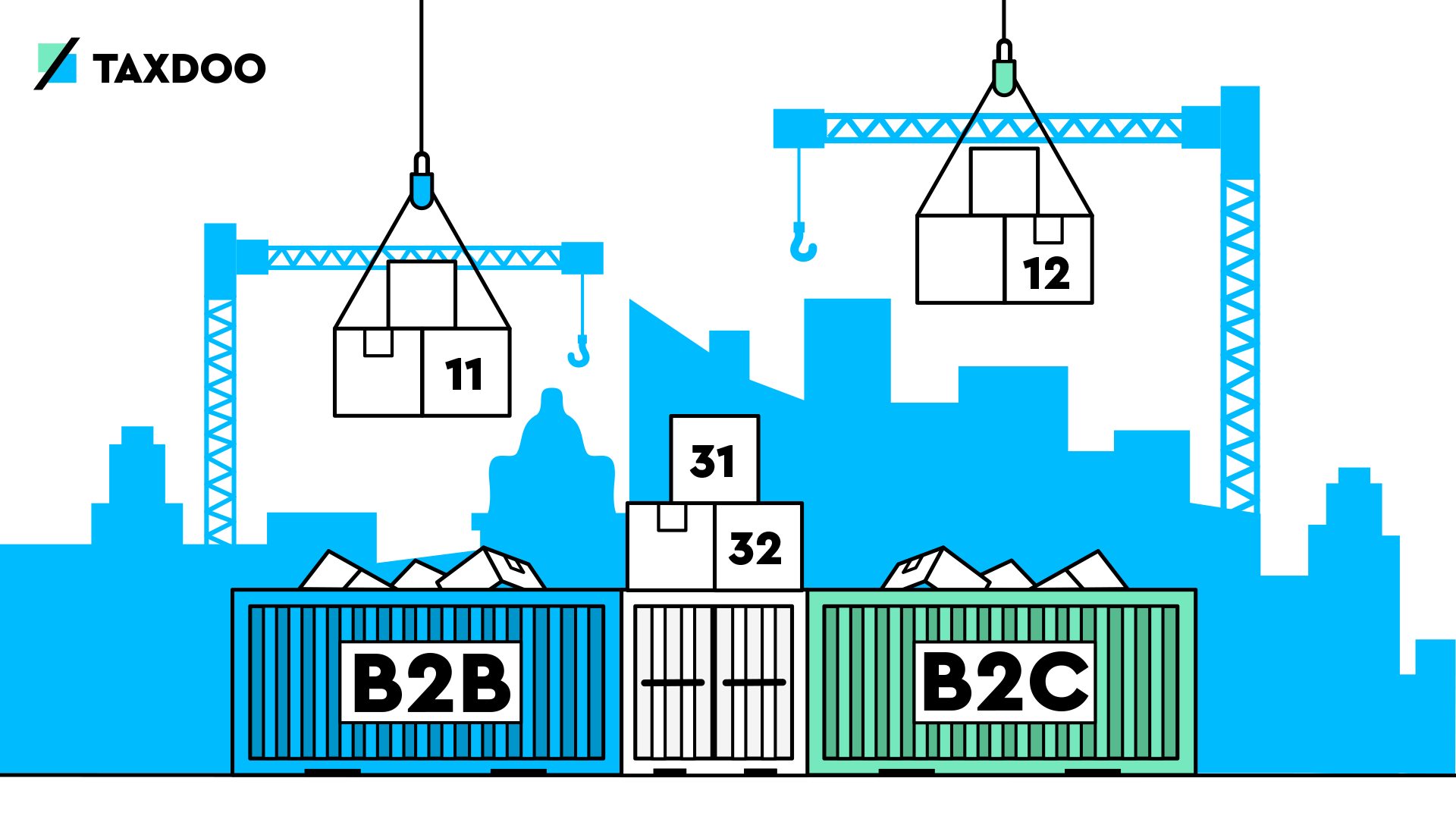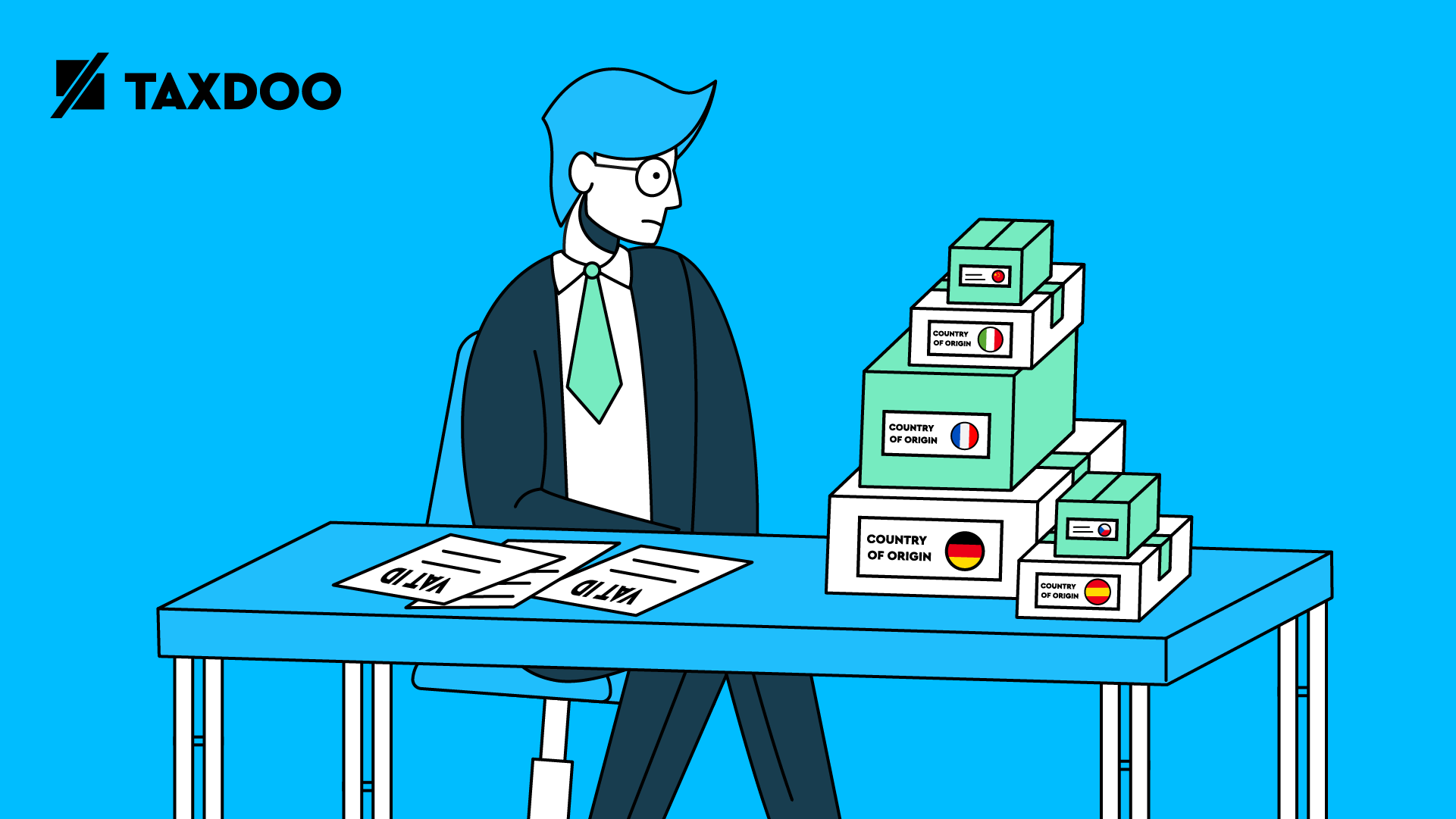VAT in the Digital Age – The Next VAT Reform for E-Commerce?

In 2021 e-commerce was turned upside down in terms of VAT due to the biggest EU VAT reform in the last decades. But the limitations of the new One-Stop-Shop soon became clear for e-commerce sellers. In practice the desired simplification of VAT compliance for cross-border sales was not as helpful as expected.
Note: You can find more information here on what has changed significantly for online sellers as a result of EU VAT reform in 2021.
In 2022 further changes to EU VAT regulations are now up for discussion as part of the “VAT in the Digital Age” initiative.
The good news is that the challenges for VAT-payers have been recognised, and possible solutions will be focused on in 2022.
How did the European Commission come up with the ‘VAT in the Digital Age’ package?The initiative has its origins in a conference of the same name held in 2019. Organised by the European Commission, several tax experts from tax authorities, companies and universities came together to discuss opportunities and challenges that new technologies bring for VAT.
In July 2020 the EU Commission published an Action Plan for Fair and Simple Taxation, which also took into account the results of the conference. Among other things, the package contains concrete measures for the modernisation of VAT regulations in the EU. These measures have now been considered in the EU Commission’s work programme for 2022, under the heading ‘VAT in the Digital Age’.
In this article you can find out what is planned and how you can participate in shaping the development of the planned measures.
The EU Commission’s Work Programme for 2022 Sounds Promising: VAT in the Digital Age
After the conference organised by the European Commission under the title ‘VAT in the Digital Age’ in 2019, it was clear: the digital economy and the development of new business models pose new challenges for tax administrations.
It should now be focused on how tax administrations can increasingly use digital technologies to:
- combat tax fraud
- reduce administrative burden for tax administrations, and
- reduce the costs of tax obligations for companies.
In addition, the EU Commission is examining whether the current VAT regulations are adapted to businesses in the digital age.
The above was summarised in the action plan under ‘VAT in the Digital Age’.
The Initiative: VAT in the Digital Age
As you already know, the aim of the initiative is to modernise current VAT law considering digital technologies.
The package includes three key aspects:
- VAT reporting obligations and electronic invoicing
- VAT treatment of the platform economy
- A single EU VAT registration
But what is actually up for discussion with respect to the key aspects of the initiative?
Digital Reporting Requirements and E-Invoicing
Some EU countries already have different systems for digital reporting obligations such as Real Time Invoice Reporting in Hungary, reporting in SAF-T format in Poland or SII in Spain. There’s also e-invoicing like the SDI system in Italy.
The economic situation during the pandemic and the resulting tax losses have increased the need for action by the member states, so more and more EU countries are striving for a solution (of their own). Last but not least, the recapitulative statement – which every cross-border e-commerce business has heard of – is also a digital reporting obligation.
What Is Planned?
The EU Commission’s objective is to create a single framework for (digital) reporting obligations relevant for VAT purposes. In this context, it is also considering creating a legal basis for mandatory e-invoicing.
More easily said than done.
What is currently subject to discussion is, for example, whether a partial reporting obligation (exclusively for cross-border supplies) or a full reporting obligation should be introduced, which would also cover local transactions. Apart from that, there would be the possibility of transaction data being stored in a mandatory format and only having to be provided in the context of an audit.
The current legal framework also does not yet provide any justification for mandatory electronic invoices. Countries that have already introduced such mandatory e-invoicing systems (such as Italy) or are planning to do so in the future (e.g. Poland) had to apply separately for this special measure derogating from the EU VAT Directive. So the new initiative also concerns the implementation of a legal basis for this.
Will All EU Countries Have to Adapt to the Same System?
The biggest challenge at this point is to ensure that the legal framework is neither too narrow nor too broad. If the requirements are too narrow, all taxpayers – including those so-called “tax honest” entrepreneurs – will be faced with an increased administrative burden.
However, the past has shown that tax fraud exists to very different degrees in different EU countries.
If, on the other hand, the requirements are defined too vaguely or only in the context of non-binding recommendations, there is once again the risk that EU countries could introduce deviating rules or systems. In this case, VAT payers would have to deal with the respective local requirements and implement them in their own processes.
Also: Some EU countries have already introduced their own systems which required significant effort and investment for both the EU country and the taxpayers. That’s why the outcome of current discussions is also likely to be driven politically.
It is not yet possible to estimate whether and to what extent the framework for digital reporting obligations and e-invoicing will be defined. The EU Commission already points out that such an implementation, including the establishment of the IT infrastructure, could take until 2030.
Tax Treatment of the Platform Economy
In 2021 new rules for a deemed supplier for VAT purposes were introduced for the distribution of goods via an electronic interface (this includes many marketplaces, for example) in certain cases. The electronic interface – the deemed supplier – will be treated as if it had acquired the item from the seller and sold it to the end customer itself.
But does that also apply to services? Many services can also be obtained via electronic interfaces – e.g. when thinking of booking a holiday accommodation. In terms of VAT, completely different rules apply in this case.
This is mainly due to the fact that the newly introduced rules concerning the deemed supplier refer exclusively to “distance sales of goods” and “supply of goods” but not to services.
Complexity and Uncertainty in the Platform Business
The above shows that platforms are treated differently for VAT purposes depending on the products or services offered.
In addition, e-commerce always has to be compared to traditional trade. An unequal tax treatment could lead to advantages or disadvantages in competition.
Needless to say that for e-commerce sellers such developments are of great interest if goods are being sold via electronic platforms. Whether and to what extent the existing rules for the supply of goods will be (or will have to be) adapted in the future, is currently not foreseeable. However, we will keep you posted about any further developments.
Expansion of the OSS? The aim of a single VAT registration
The third pillar of the initiative is no less ambitious than the first two. For entrepreneurs this point should be of particular interest. Especially if you as an online seller – despite the introduction of the OSS – continue to maintain VAT registrations in other EU countries because you use warehouses there. Great opportunities for simplification are possible.
Registrations Lead to Significant Effort for Companies
The EU Commission has recognised the administrative and financial obstacles to cross-border trade that can arise from a wide range of registration obligations.
Best case scenario: You are a Taxdoo customer and have never been confronted with these practical problems, as we take care of exactly these nerve-wracking issues for you. You didn’t know that we can take care of that for you? Find out how here.
Everyone else will most likely have rather unpleasant memories: the registration process is different in every country, often needs to be done in the national language and with the help of local tax advisors. Once the first hurdle of registration is accomplished, regular VAT returns follow different intervals according to national requirements.
In the future individual VAT registration and returns may no longer be necessary. According to the Commission, such obstacles may prevent VAT payers from making their contribution to tax revenue. For this reason, it should be examined how VAT registration and VAT return obligations can be reduced.
Will Supplies to Other EU States Become Easier?
The aim is precise:
Preferably a single VAT registration should be sufficient to be able to operate in the entire EU market.
How this can be achieved has been the subject of discussions in expert groups for quite some time now. The most obvious way forward would be to extend the OSS scheme to the types of transactions that cannot be reported right now.
This includes, for example, intra-community movements of goods and corresponding intra-community acquisitions as well as local sales from warehouses. From the perspective of online sellers, the desired changes are clear.
But from a broader VAT perspective such an expansion of the system is complex, as the world of VAT goes far beyond e-commerce. For this reason, various options are being discussed as to what extent an extension of the OSS can be made to B2B supplies of goods, B2B supplies of services, B2C supplies of goods, etc.
At the same time, the expansion of the so-called reverse-charge mechanism is also a topic of discussion. In such cases, the tax liability is transferred to the recipient of the service. Such regulation has been implemented, for example in Italy or Spain for local supplies of goods made by companies not resident in these countries.
Example:
If an online seller not resident in Spain sells their goods from a Spanish warehouse to a Spanish business customer, the reverse-charge mechanism applies to this supply. The online seller does not have to pay the VAT for this sale. They can issue an invoice with reference to the transfer of the tax liability to the B2B buyer, and the latter is obliged to pay the VAT directly to the Spanish authorities. This can avoid VAT registration in Spain for the online seller.
While the goal is fixed, the way to get there is all the more difficult. To what extent a complete expansion of the OSS is actually feasible, what happens to possible input tax amounts, and what the role of the reverse-charge mechanism will be in this context is not clear. We will definitely follow the developments and keep you up to date.
What Is the Impact of “VAT in the Digital Age” on IOSS?
Lastly we would also like to inform you about the Import-One-Stop-Shop (IOSS) developments in this context.
The IOSS scheme (like the OSS) already pursues the goal of a single registration for VAT purposes in the EU when goods are imported from third countries. However, this is only applicable to consignments that do not exceed an intrinsic value of €150.
In the course of the VAT in the Digital Age package, the Commission is now considering abolishing the €150 euro limit and extending the IOSS to all supplies of goods from third countries to the EU. A mandatory application of the currently optional taxation scheme is also under discussion.
Why is this subject to discussion? Initial experience has shown that the IOSS system is unfortunately quite prone to errors and that, in particular, the IOSS numbers issued exclusively to registered users are abused in practice. In order to enable secure tax collection, these problems must be tackled at the same time.
What’s Next for ‘VAT in the Digital Age’?
As you can see, the impact can be significant, but at the same time, a lot of details are still up for discussion.
All in all the intentions are, from our perspective, quite positive and should bring simplification for both VAT payers and tax authorities. As you may have noticed though, there is not yet a specific proposal from the European Commission to amend the VAT Directive.
The initiative is still at an early stage and so far discussions have mainly been held in expert groups.
In 2022, however, the initiative and respective details will be made increasingly public. A proposal by the EU Commission to amend the VAT Directive is planned for the third quarter of 2022. It’s still a long way to the implementation of the possible changes into national law.
How Can I Contribute?
As mentioned in the beginning, every individual can make a contribution and help shape the upcoming reform. How can you do that?
The EU Commission launched a public consultation on 20 January 2022 containing a questionnaire with various questions on the individual points of the initiative. The questionnaire was published in order to take into account the opinions of VAT payers and other market participants.
Anyone can take part in the consultation until 5 May 2022.
Based on the results of this survey and a study conducted recently, the EU Commission will decide on the course of the initiative.
Is Taxdoo Participating to Raise Awareness of the Challenges in E-Commerce?
The questionnaire is very extensive and complex. We will follow our general approach and try to take off any burden relating to VAT possible.
Taxdoo will submit its own statement as part of the consultation, to draw attention to the challenges faced by online sellers and their tax advisors with the existing VAT rules and the planned changes.
In the coming weeks we will also take you on a journey of the possible outcome of future EU VAT rules. You will find blog posts on key elements of the initiative, which will go into more detail on the relevant topics. Subscribe to our newsletter to stay up to date, you can do that at the bottom of this page.
Weitere Beiträge

One-Stop-Shop (OSS) EU VAT for E-Commerce

Types of transactions for Intrastat declarations from 2022: A New List
